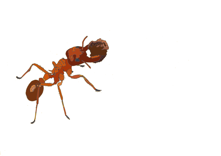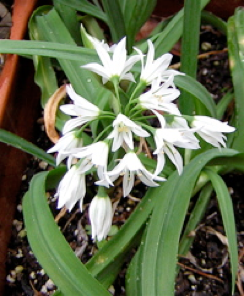Spring into spring with this months edition of Herbs, Healing and Health.
Garlicky Goodness
I am going to begin this month with another new friend that I have made in the plant world since coming to live in Dorset: Three-cornered leek (or garlic, depending on which book you pick up). Allium triquetrum.
I first came upon this immigrant to our shores down at West Bay where it is growing in abundance on the slope leading up the cliff towards Eype.
Three-cornered leek is a native of the Mediterranean, Caucasus and Iran and was first cultivated in England in the 1750’s. It became established in Guernsey in 1849 and can now be found throughout England, Wales, and Ireland but is rare in Scotland. All parts of the plant (including the bulb) are edible and give off a wonderful oniony/garlicky smell when crushed. The young leaves have traditionally been cut up and used in salads and in Sicily the leaves are mixed with olives or cheese (sounds delicious). They also go well with leek and potato soup.
I have tried freezing them in freezer bags. This is fairly successful although they get a bit soggy, but are fine for adding to soups, frittatas etc.
On the island of Corsica it is used along with Common Brighteyes
(Reichardia picroides), Bladder Campion (Silene vulgaris), Borage (Borago officinalis), and Sheep’s Sorrel (Rumex acetosella) along with other wild edible plants in a wild soup: an excellent example of food as medicine.
One of those magpie like facts that I am so fond of is that the seeds are dispersed by ants. There are ants all over the world staggering about the place with unfeasibly large and heavy seeds on their backs. Why do they do this? Well, here is a lovely word for you: Myrmecochory. This word comes from the ancient Greek, and means ‘circular dance’. Myrmechochorous plants deliberately produce an external structure around their seeds, which provides a food source for ants. The ants carry the seeds home, eat the yummy external wrapping and eject the seeds from the nest. The ants get fed, and the plant gets its seeds spread about the place: a fabulous example of co-operation and balance in the natural world.
There are ants all over the world staggering about the place with unfeasibly large and heavy seeds on their backs. Why do they do this? Well, here is a lovely word for you: Myrmecochory. This word comes from the ancient Greek, and means ‘circular dance’. Myrmechochorous plants deliberately produce an external structure around their seeds, which provides a food source for ants. The ants carry the seeds home, eat the yummy external wrapping and eject the seeds from the nest. The ants get fed, and the plant gets its seeds spread about the place: a fabulous example of co-operation and balance in the natural world.
A circular dance indeed.
There are no specific mentions of three-cornered leek in terms of medicinal properties, but they possess the same sulphur containing phytochemicals as other members of the genus, and it is therefore very probable that, when eaten regularly, they would confer all the benefits of other forms of garlic, ie cholesterol lowering, anti-fungal, tonic for the circulation and digestive system. Speaking of the digestive system, I would strongly suspect that this opportunity to ‘eat the wild’ provides us with a chance to ingest some excellent quality prebiotics, thus not only supporting existing gut flora but also encouraging a more varied and healthier gut flora, positively impacting on health on many levels.
probable that, when eaten regularly, they would confer all the benefits of other forms of garlic, ie cholesterol lowering, anti-fungal, tonic for the circulation and digestive system. Speaking of the digestive system, I would strongly suspect that this opportunity to ‘eat the wild’ provides us with a chance to ingest some excellent quality prebiotics, thus not only supporting existing gut flora but also encouraging a more varied and healthier gut flora, positively impacting on health on many levels.
Three cornered leek is classified as an invasive plant, and is listed under schedule 9 of the Wildlife and Countryside Act 1981. As such it is an offence to plant or otherwise cause this species to grow in the wild. To quote Robin Harford (eatweeds.co.uk)
So, with that rather marvelous sentiment in mind, here is a recipe for pesto, which I hope you will be able to put to good use.
Guys Wild Garlic Pesto
In a blender, whizz together roughly equal quantities of the following:
Wild garlic, hazelnuts, and parmesan cheese (or similar hard cheese) in olive oil. Season with black pepper.
(Recipe taken from Riverford Organic veg box recipes.)
As previously stated, all parts of the plant are edible. However, it would be possible to mistake the leaves of three-cornered leek/garlic for those of daffodils or other more poisonous plants. Here is where your skills in pharmacognosy come into play. The garlicky scent of three cornered leek is pretty unmistakable and an easy way to confirm you have got what you think you have got. For a quick guide to identifying this lovely plant check out
www.eatweeds.co.uk/allium-triquetrum.
Alkaloid alert
Some research has been brought to the attention of our governing bodies in recent weeks concerning the cross contamination of herbal teas with plants such as ragwort which contain pyrrolizidine alkaloids. These compounds are pretty ubiquitous in the plant world, but in high dosages may be harmful to susceptible people. Having read some of the research in question I would like to highlight the following points:
Firstly, suppliers to professional herbalists such as myself have excellent quality control mechanisms in place and will routinely screen for substances such as pyrrolizidine alkaloids, so any of you currently taking herbal teas prescribed by me, please rest assured that this issue is highly unlikely to affect you.
Secondly, the National Institute of Medical Herbalists has stated that:
‘The MHRA has not issued the NIMH with any notices. If there was a real concern the MHRA would have contacted us immediately and advised us to withdraw all PA containing herbs. There has been no warning issued.’ (MHRA = Medicines and Healthcare Products Regulatory Agency)
I personally am not concerned that there is any cause for alarm. I have just included this for your information. If anyone does have any concerns relating to this matter please do feel free to contact me for further information.
Syrupy sumptuousness
Last but not least, we have an afternoon of syrupy sumptuousness ahead on Saturday 19th March. Sugar is not a nutritional problem: manic overconsumption of it is! It provides an excellent method of preserving foods and herbs and also a medium for making the most delicious accompaniments to food, as well as very palatable remedies. Come along and find out how easy it is to make medicinal syrups as well as medicinal honeys, electuaries and oxymels. Yummy!